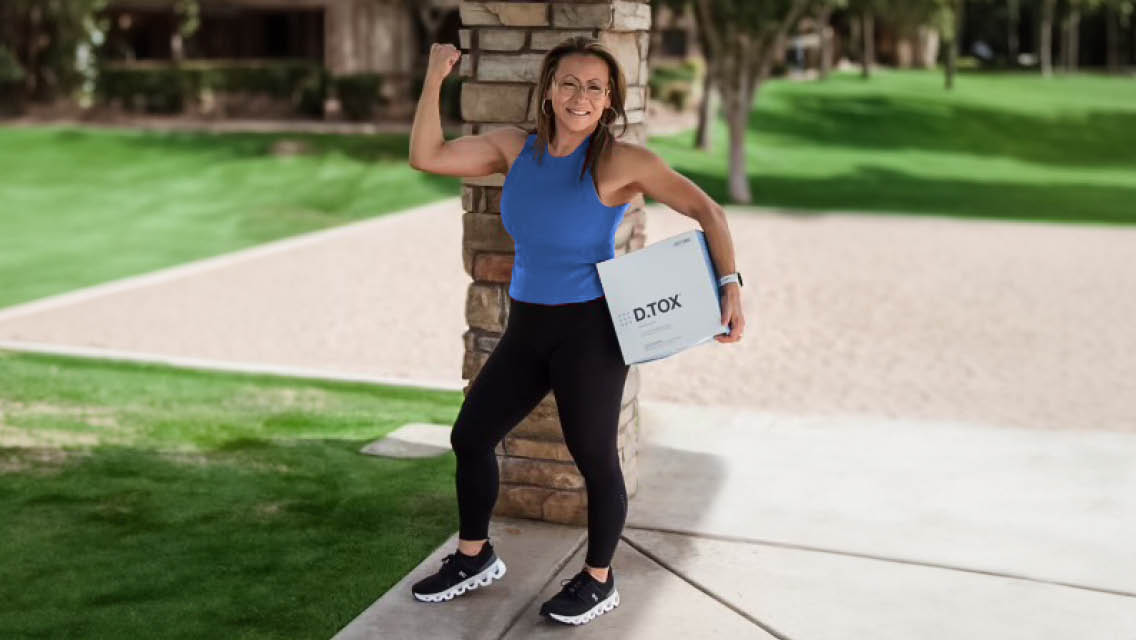Like many people, I used to drink coffee to start my day. It was the first thing I put in my body before my early morning workouts. I loved the smell — I still do. But to make my coffee more palatable, I loaded each cup with cream and sugar. I had no idea the concoction had the potential to hinder my health and fitness.
I’ve been dedicated to exercise since I discovered its ability to help me cope with the stress of a divorce in my early 20s. At the time, the tension relief and physical outlet it provided were so valuable that working out became an essential part of my life.
Over the following three decades, I continued to prioritize my mental, physical, and spiritual well-being through exercise. But in early 2022, I started to feel curiously sluggish during my workouts — no matter how much coffee I consumed.
I was particularly sensitive to this fatigue because it’s a common symptom of Hashimoto’s disease, an autoimmune condition I contracted in my late 20s. But because I thought I was managing my illness, I didn’t know how to explain my fatigue, headaches, and indigestion. Only later did I realize how much my dietary choices were sabotaging my well-being and how much I needed a nutritional reset.
Experimenting With Nutrition
I regularly attended classes taught by Life Time trainer and nutrition coach Brigitt Castille at my club in Gilbert, Ariz. When Castille shared her positive experience with a detox program, I was inspired. I couldn’t figure out what was causing the symptoms I’d been experiencing, but I knew I needed to switch something up. Nutrition seemed like a great place to start.
Although I believed I followed a pretty healthy diet, which featured a lot of carbs for energy, I wondered how much protein I should eat. I also wanted to understand the effects of inflammatory foods, because they can be particularly problematic for those with autoimmune disorders.
In September 2022, I began the Life Time D.TOX program. It’s designed to support the body’s natural detoxification system by eliminating potentially inflammatory foods — including gluten, highly processed foods, dairy, soy, eggs, peanuts, and caffeine — that may be problematic for people with sensitivities. The program has three phases: roughly one week of preparation, two weeks of detoxification, and a period of restoration, during which participants slowly reintroduce foods and see how their bodies react.
The first few days of the preparation period were the most difficult. It was tough to wean myself from coffee, and grocery runs took longer than usual because I had to closely read labels to make sure to avoid elimination foods. The hardest ingredient to steer around was soy because it’s so often found in foods like protein bars, baked goods, and sauces.
At first, I assumed that giving up certain foods meant I would eat less. But plenty of options were still on the table, including many vegetables and fruits (primarily organic to avoid the toxin residue on conventionally grown produce), wild-caught fish, organic or pasture-raised poultry, raw nuts (no peanuts), and starches like rice, potatoes, and quinoa. I was encouraged to eat as much as my body needed.
I kept my menu as simple as possible, eating mostly ground turkey in different ways for protein because I don’t like beef. I mixed the turkey with brown rice or put it in lettuce as a wrap. I also ate a lot of salads and snacked on mangoes, blackberries, raspberries, and strawberries.
Over time, I realized I tended to overeat, which may have contributed to indigestion and bloat. Those symptoms resolved as I began eating more intuitively — paying attention to hunger and satiety. I found that I functioned better when I ate smaller portions more frequently.
After the detox phase, I started feeling lighter. I didn’t lose weight, but my shape changed; my muscles became more defined. I didn’t even realize I had been experiencing chronic headaches until they disappeared. I had renewed energy.
What’s more, I didn’t crave sugar or highly processed foods. Eating more protein and whole foods gave me a sense of satiety more quickly, so I didn’t feel the need to seek out quick sources of energy.
One Step Back
During the restoration phase, I reintroduced foods as recommended. Doing this allows you to recognize how your body responds to different things. I learned that for me, eating soy and gluten led to inflammation, bloating, headaches, and a midday crash.
I stuck to eating only the program’s approved foods for a while, but I eventually became less disciplined. By the end of the year I was eating more ultraprocessed foods, including pizza, and my beloved deep-fried tacos. My cravings returned, and with them came more food headaches, which I noticed after eating too much salt or soy.
Feeling the need to get nutritionally realigned, I signed up for a second round of D.TOX at the beginning of 2023. I expected to jump back in, but my body didn’t respond positively at all. I suffered more frequent headaches and constantly felt hungry and cold.
In addition to these symptoms, I was also choking on food and having trouble breathing, which encouraged me to check in with a doctor. An MRI showed my thyroid had swelled to three times its normal size. An enlarged thyroid is a common symptom of Hashimoto’s; although it isn’t usually painful, mine was partially obstructing my airway. When my doctor recommended removing my thyroid, I didn’t hesitate. I underwent surgery to remove it that February.
My recovery was relatively easy, and by the fall of 2023, I was healthy and ready to give the detox program another go. This time I understood what was involved and how to prepare more efficiently. I felt ready.
Third Time’s a Charm
My third time through the program was the most positive. I didn’t fight through food cravings in the beginning or think about foods I was avoiding. Being prepared allowed me to try more recipes with the approved foods.
When the time came to slowly reintroduce restricted foods into my diet, I already had a good idea of what I needed to avoid, like soy and gluten, which caused bloating and terrible headaches. But this time, I also found I could not eat sausage — even turkey sausage — likely because of the nitrates used as preservatives and for coloring.
I’ve been able to manage the symptoms of my Hashimoto’s disease, too. Despite having my thyroid removed, my medical team hasn’t needed to adjust the medication I use for treatment, which is a good sign that my lifestyle habits are supporting my well-being.
Moving forward, I plan to prioritize protein and organic whole foods, honor portion sizes, and avoid foods that cause adverse reactions. My commitment to exercise has also remained steadfast, especially now that my diet is more supportive of my goals.
That’s why I’m over my emotional attachment to coffee (and the headaches and indigestion that I learned came with it). After the first detox, I switched to decaf but eventually weaned off coffee altogether. I finally learned that my life and fitness are better off without it.
Rebecca’s Top Takeaways
- Mentally prepare. After you decide to start, she advises, “commit to it 100 percent.” Sticking to a detox program can be more difficult if you’re not wholly committed.
- Follow a plan for achieving wellness objectives. It’s important to have wellness goals, Rebecca notes, but it is equally vital to develop a solid plan to achieve them.
- Inform close friends and family. “Going out to eat was a big challenge,” she recalls. Let people know what you’re doing to give them the opportunity to be more supportive. That way, “they won’t wonder why you’re choosing not to eat certain things or try to coerce you to eat them anyway.”
My Turnaround
For more real-life success stories of people who have embraced healthy behaviors and changed their lives, visit our My Turnaround department.
Tell Us Your Story! Have a transformational healthy-living tale of your own? Share it with us!






This Post Has 0 Comments